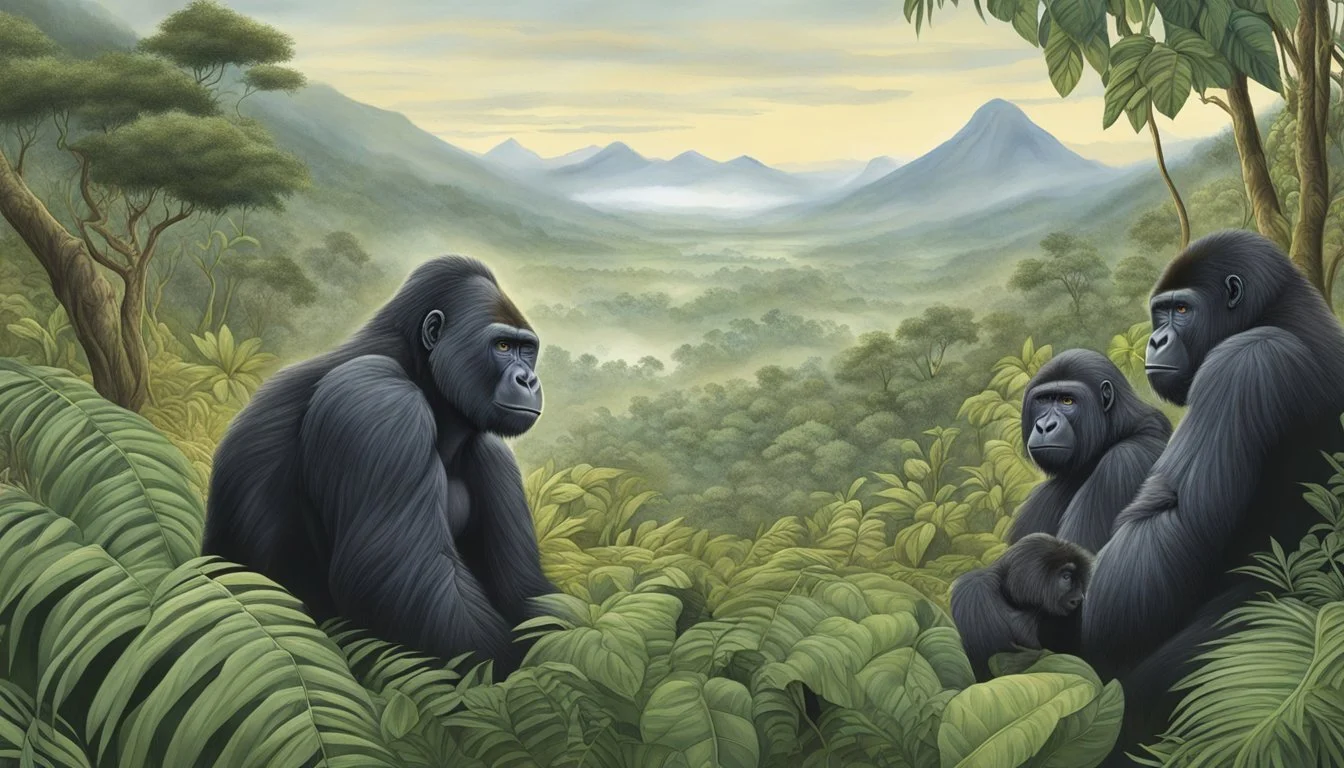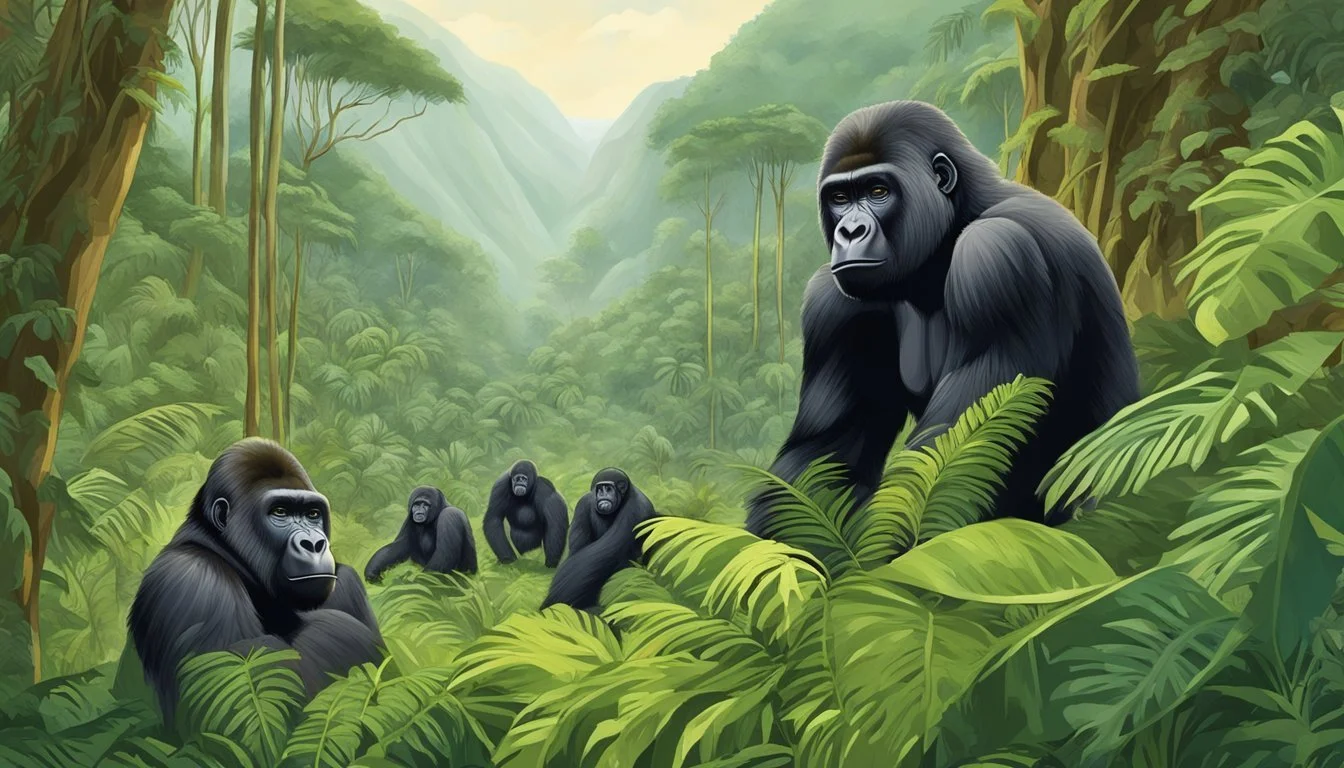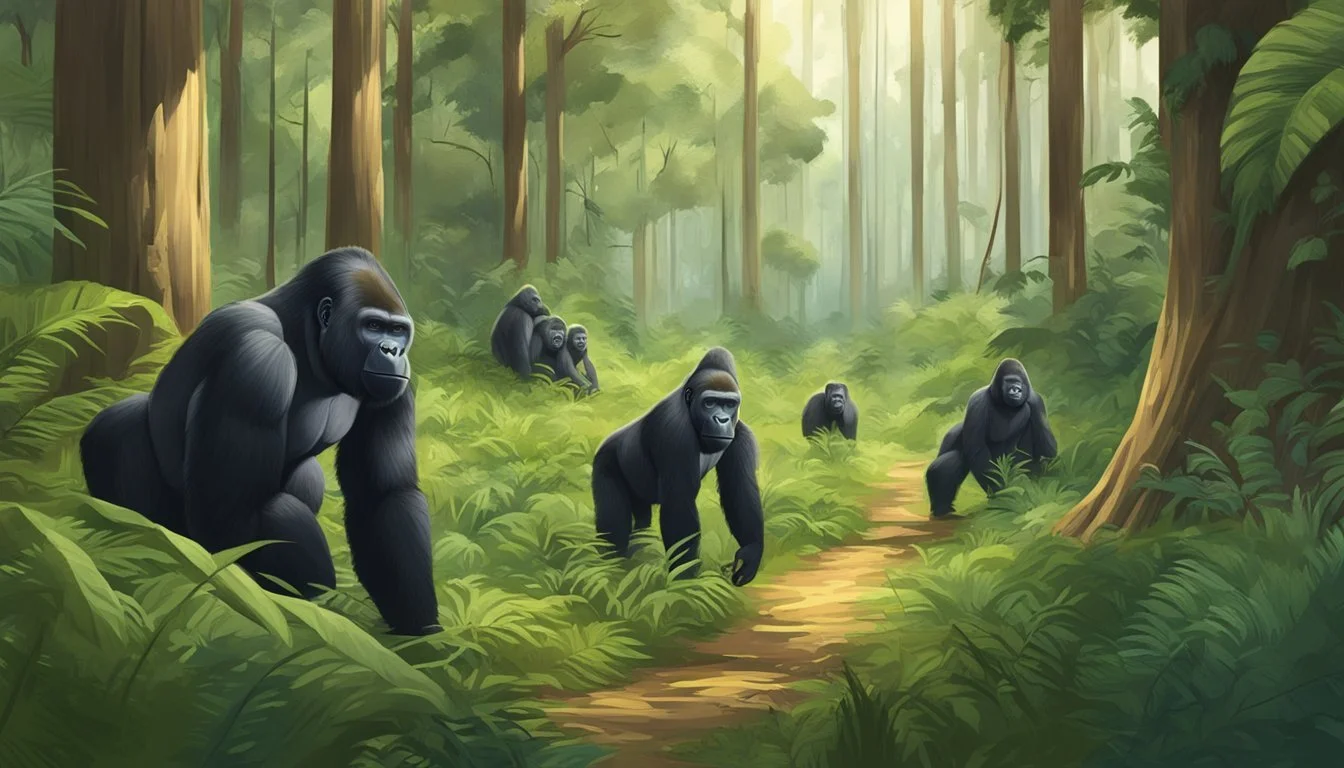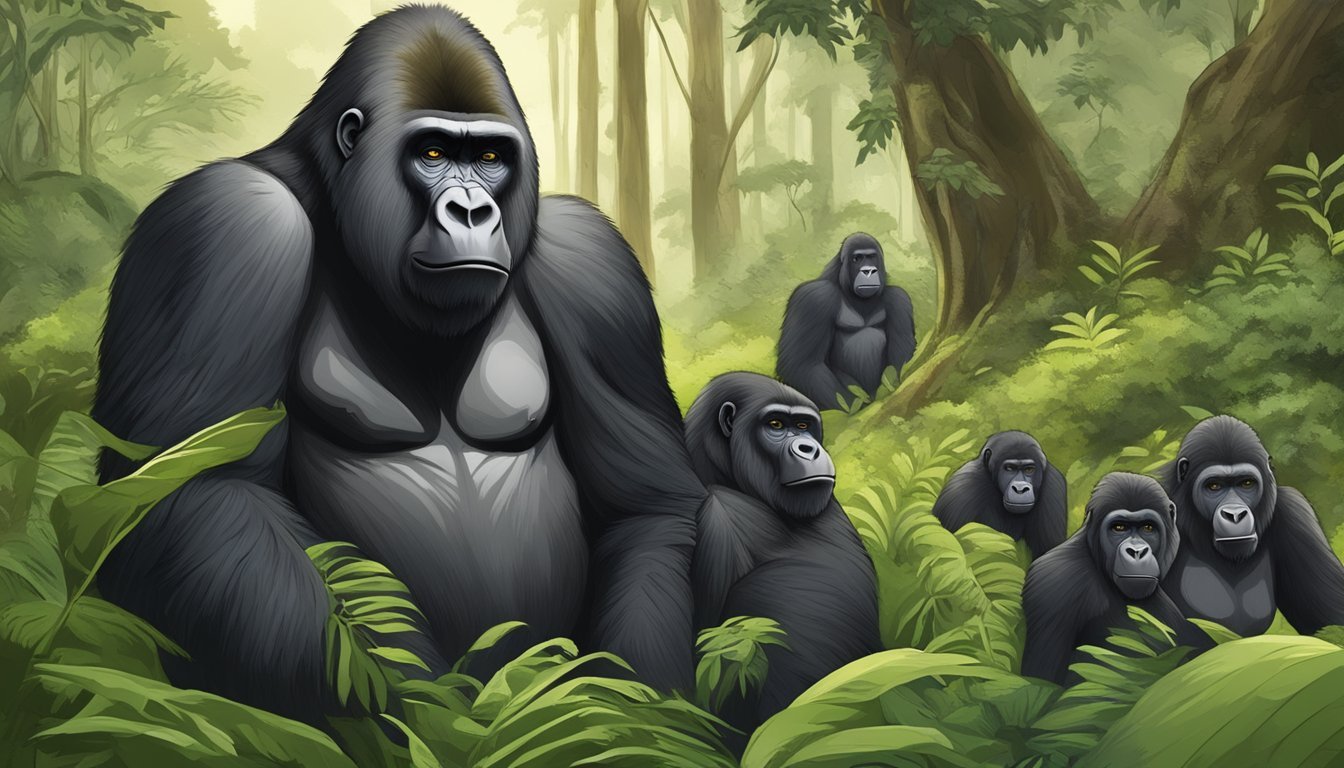Primates and Poachers: Dian Fossey's Real Mission in 'Gorillas in the Mist'
Uncovering the Truth Behind Her Conservation Efforts
Dian Fossey's groundbreaking work with mountain gorillas in Rwanda captivated the world's attention and brought critical focus to primate conservation. Her story, immortalized in the film "Gorillas in the Mist," reveals a deeper mission beyond scientific observation.
Fossey dedicated her life to protecting endangered mountain gorillas from poachers and habitat loss, often at great personal risk. From 1966 until her tragic death in 1985, she studied gorilla groups in the forests of Rwanda, developing unprecedented insights into their behavior and social structures.
The American primatologist's passion for these gentle giants led to the establishment of the Karisoke Research Center and inspired global conservation efforts. Fossey's legacy continues through the Dian Fossey Gorilla Fund, which carries on her work in gorilla research and protection.
Early Life and Career of Dian Fossey
Dian Fossey's journey from occupational therapy to primatology was marked by influential encounters and a passion for wildlife. Her educational path and career shift laid the foundation for her groundbreaking work with mountain gorillas.
Education and Shift to Primatology
Dian Fossey was born on January 16, 1932, in San Francisco, California. She initially pursued a career in occupational therapy, graduating from San Jose State University in 1954. Fossey worked with children in a Kentucky hospital for several years.
Her path took an unexpected turn in 1963 when she embarked on a trip to Africa. This journey sparked her interest in primates and wildlife conservation. Fossey's passion for animals wasn't new; she had been an avid equestrian in her youth.
Following her African experience, Fossey sought further education in primatology. She attended courses at the University of Cambridge to deepen her understanding of animal behavior and conservation.
Influential Encounters with Louis Leakey
Fossey's meeting with renowned anthropologist Louis Leakey in 1963 proved pivotal. Leakey, known for his work with Jane Goodall, recognized Fossey's potential and encouraged her to study gorillas.
In 1966, Leakey secured funding for Fossey to begin her research in the Congo. This opportunity set her on the path to becoming a leading primatologist. Fossey's dedication impressed Leakey, who continued to support her work.
Leakey's mentorship was crucial in shaping Fossey's career. He helped her transition from occupational therapy to field research, believing in her ability to contribute significantly to primate studies.
Establishment of Karisoke Research Center
Dian Fossey founded the Karisoke Research Center on September 24, 1967 to study endangered mountain gorillas in Rwanda. The center's name combines two nearby volcanoes - Karisimbi and Bisoke.
Setting Up Base in the Virunga Mountains
Fossey chose a remote location between Mount Karisimbi and Mount Bisoke in Rwanda's Volcanoes National Park. The rugged terrain and high altitude posed challenges, but provided ideal access to gorilla habitats.
She initially used tents before constructing more permanent structures. The center served as both living quarters and a scientific base of operations.
Local contacts like Rosamond Carr and Alyette De Munck provided crucial assistance in establishing the site. Their knowledge of the region proved invaluable as Fossey navigated unfamiliar territory.
Research Contributions and Discoveries
Karisoke quickly became a world-renowned primate research station. Fossey and her team made groundbreaking observations on gorilla behavior, social structures, and ecology.
They developed methods to identify individual gorillas by their unique nose prints. This allowed for long-term tracking of specific animals and family groups.
The center's work revealed the complex social bonds within gorilla troops. Researchers documented tool use, communication methods, and dietary habits.
Karisoke's findings played a crucial role in gorilla conservation efforts. The data gathered helped shape protection strategies in Rwanda and neighboring countries.
Gorillas in the Mist: The Legacy and Impact
Dian Fossey's work with mountain gorillas left an indelible mark on wildlife conservation and public understanding. Her book and the subsequent film adaptation brought global attention to the plight of these endangered primates.
The Book and the Iconic Film Adaptation
"Gorillas in the Mist" was published in 1983, detailing Fossey's 13-year study of mountain gorillas in Rwanda. The book became a bestseller, offering readers an intimate look at gorilla behavior and the threats they faced. In 1988, the story was adapted into a film starring Sigourney Weaver as Fossey.
The movie received critical acclaim and five Academy Award nominations. Weaver's portrayal of Fossey brought the conservationist's passion and dedication to life on screen. The film's stunning visuals, captured in part by National Geographic cinematographers, showcased the beauty of the gorillas' habitat.
Public Perception and Awareness
Fossey's work and its adaptations significantly impacted public perception of gorillas. Prior to her research, these primates were often viewed as dangerous beasts. "Gorillas in the Mist" presented them as intelligent, gentle creatures worthy of protection.
The book and film raised awareness about the threats facing mountain gorillas, including poaching and habitat loss. This increased public interest led to greater support for conservation efforts. Many wildlife organizations saw a surge in donations and volunteer applications.
Fossey's legacy continues to inspire new generations of conservationists. Her work laid the foundation for ongoing gorilla protection programs in central Africa.
Conservation and Anti-Poaching Efforts
Dian Fossey's work sparked crucial initiatives to protect mountain gorillas from poaching and habitat loss. These efforts faced significant challenges but led to important advances in gorilla conservation.
The Digit Fund and Its Evolution
Fossey established the Digit Fund in 1978 after the death of her favorite gorilla, Digit. The fund aimed to finance anti-poaching patrols and protect gorilla habitats. After Fossey's death in 1985, the organization evolved into the Dian Fossey Gorilla Fund International.
This expanded entity continued Fossey's mission with a broader scope. It funded ranger patrols, supported scientific research, and promoted community education programs. The fund's work contributed significantly to the gradual increase in mountain gorilla populations over the decades.
Challenges in Protecting Gorillas
Gorilla conservation faced numerous obstacles. Poaching remained a persistent threat, driven by demand for gorilla body parts and infant gorillas for the illegal pet trade. Political instability in the region sometimes disrupted protection efforts.
Limited resources and the gorillas' small habitat range complicated anti-poaching measures. Rangers risked their lives to protect the animals, facing armed poachers in remote areas. Despite these challenges, conservation groups made progress through increased patrols, community engagement, and international support.
Improved tracking methods and habitat protection contributed to the species' gradual recovery. By 2018, mountain gorillas were reclassified from "critically endangered" to "endangered", marking a rare conservation success story.
Mountain Gorillas: Biology and Behaviors
Mountain gorillas are remarkable primates with complex social structures and behaviors. Their biology and social dynamics have fascinated researchers for decades, revealing both heartwarming family bonds and harsh survival challenges.
Social Structure and Family Dynamics
Mountain gorillas live in tight-knit family groups led by a dominant silverback male. These groups typically consist of 2-20 individuals, including females, juveniles, and infants. The silverback protects the group and makes decisions about feeding and nesting locations.
Females usually give birth to a single infant every 3-4 years. Mother-infant bonds are exceptionally strong, with mothers carrying and nursing their young for several years. Juveniles learn essential survival skills through play and observation of adults.
Gorillas communicate through a variety of vocalizations, facial expressions, and body language. Chest beats, a distinctive gorilla behavior, serve multiple purposes including territorial displays and group coordination.
Threats to Survival: Infanticide and Habitat Loss
Infanticide poses a significant threat to mountain gorilla populations. When a new male takes over a group, he may kill infants fathered by the previous leader. This behavior, while seemingly cruel, is an evolutionary strategy to bring females back into estrus more quickly.
Habitat loss remains the most pressing threat to mountain gorilla survival. Their limited range in the Virunga Mountains and Bwindi Impenetrable Forest faces encroachment from human activities. Deforestation for agriculture and illegal logging shrink available habitat.
Climate change further exacerbates habitat pressures, altering vegetation patterns in gorilla territories. Conservation efforts focus on protecting remaining forest areas and promoting sustainable practices in surrounding communities.
The Role of Tourism and Ecotourism in Conservation
Tourism and ecotourism have become significant factors in gorilla conservation efforts. These activities generate revenue and awareness while presenting challenges for species protection.
Impacts of Gorilla Tourism on the Species
Gorilla tourism in places like Volcanoes National Park has raised global awareness about the plight of mountain gorillas. This increased attention has led to more funding for conservation programs and anti-poaching efforts. Tourism revenue provides economic incentives for local communities to protect gorillas and their habitats.
Gorilla encounters also allow researchers to monitor populations more closely. Regular visits help habituate gorillas to human presence, making health checks and behavioral studies easier to conduct.
However, tourism can stress gorillas if not managed properly. Close proximity to humans may expose gorillas to diseases. Increased human activity in gorilla habitats can lead to habitat disturbance and behavior changes.
Balancing Visitor Experience and Gorilla Welfare
Strict regulations govern gorilla tourism to minimize negative impacts. Park authorities limit the number of daily visitors and the duration of encounters. Tourists must maintain a safe distance from gorillas and follow specific guidelines to reduce stress on the animals.
Ecotourism initiatives focus on educating visitors about gorilla conservation. Many tour operators invest in community development projects, creating alternative livelihoods for local people who might otherwise engage in poaching or habitat destruction.
Conservation organizations work with tourism providers to develop best practices. These include training guides, implementing health protocols, and monitoring gorilla groups for signs of stress or illness.
Balancing tourism revenue with gorilla welfare remains an ongoing challenge. Continuous research and adaptive management strategies are essential to ensure that tourism supports rather than hinders conservation efforts.
Dian Fossey's Legacy and Continued Influence
Dian Fossey's work revolutionized gorilla research and conservation efforts. Her dedication inspired future generations of primatologists and conservationists.
The Trimates and Modern Primatology
Dr. Fossey, along with Jane Goodall and Birutė Galdikas, formed the renowned "Trimates." This group of women pioneered long-term field studies of great apes in their natural habitats. Their work transformed primatology and wildlife conservation.
Fossey's research methods and findings continue to influence modern primatology. She emphasized the importance of habituation and long-term observation. These techniques remain crucial in studying primate behavior and social structures.
Her work also highlighted the interconnectedness of conservation and research. This approach is now standard in primate studies worldwide.
The Gorilla Organization and Future Directions
The Dian Fossey Gorilla Fund carries on Fossey's legacy. It focuses on protecting mountain gorillas and their habitats in Rwanda and the Democratic Republic of Congo.
The organization employs local staff and trains future conservationists. This approach ensures sustainable, community-based conservation efforts.
Research at Karisoke Research Center, founded by Fossey, continues to yield valuable insights. Recent studies have examined gorilla health, genetics, and responses to climate change.
The Fund also engages in anti-poaching efforts and community development programs. These initiatives address both immediate threats and long-term challenges to gorilla conservation.





